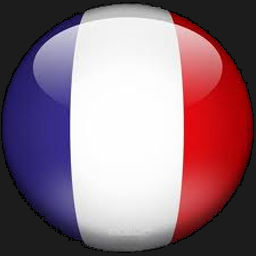
POLINA opens in NY on August 25th and LA on September 1st
The film, which premiered at the Venice Film Festival last year, is opening in theaters in August 25th in NY and September 1st in LA /Oscilloscope Laboratories
For the occasion, Valerie Muller and Angelin Preljocaj talk to NEW YORK TIMES
Thoroughly Modern Polina
By GIA KOURLASAUG. 23, 2017
Anastasia Shevtsova, a member of the Mariinsky Ballet, in Valérie Müller and Angelin Preljocaj’s “Polina.” Credit Oscilloscope Laboratories
She has friends. She goes out. She has a sense of humor. What she’s not?
“Totally depressed and anorexic,” said the filmmaker Valérie Müller, who, with her husband, the choreographer Angelin Preljocaj, directed the film “Polina,” which opens tomorrow. (It came out in France in November.)
Polina, the movie’s heroine — we see her first as a child and then as an adult — undergoes rigorous training at a Russian ballet academy. But when it’s time to begin her career she becomes disenchanted. What makes the film stand out is that it’s a different take on a familiar subject: Polina doesn’t eventually find success as a prima ballerina. She becomes a choreographer.
The film is also a portrait of what it’s really like to be a dancer today. “She’s a young woman and that was very important for us — that the main character is a modern girl,” Ms. Müller said. “A contemporary girl who has ——”
Mr. Preljocaj finished her sentence: “A real life,” he said.
And real problems. “Polina” is about figuring out how to use your imagination to find your way. How can anxiety and disappointment fuel creativity?
“This movie is talking about dance,” said Mr. Preljocaj in a joint phone interview with Ms. Müller. “But it could be exactly the same structure and the same narrative for painting or for sport.”
Ms. Müller and Mr. Preljocaj, who live in Aix-en-Provence where Ballet Preljocaj is situated, were inspired by Bastien Vivès’s graphic novel “Polina,” on which the film is based.
It’s fitting: Mr. Preljocaj’s choreography influenced some of the book’ striking drawings in which bodies somehow look like they’re moving and not just caught in a pose. “There were a lot of images in it that looked very similar to some of my choreography,” Mr. Preljocaj said. “We discovered that he had, in fact, attended a number of my performances and that was how the images found their way into the design of the graphic novel. And the movements as well.”
Anastasia Shevtsova, a member of the Mariinsky Ballet in St. Petersburg, plays Polina and helps brings the graphic novel to life; in an uncanny way — just as with the drawings — her face can be blank one moment and alive in the next. In casting the part, the directors said they wanted, above all, an actual dancer. And she couldn’t be too sophisticated.
Mr. Preljocaj said: “Obstinate. Stubborn.”
At the start of the film, Polina is closed in; gradually, she opens herself to other people. “What we liked in Anastasia is her intensity — without speaking, she is very intense in front of the camera,” Ms. Müller said. “And as the character is not very talkative, it was very important for us that she had this way of expressing herself. By her body, by her face, by her eyes. Anastasia had this magnetism.”
Polina is on a ballet track from an early age. But in an early scene, a dance in a snowy field, it’s evident that she just loves to move. Dancing by herself and smiling all the while, a young Polina (Veronika Zhovnytska) skips and lunges, playing with gravity by pitching backward. When she hops off a bench and strolls into the night, she could be Billy Elliot’s little sister.
But she continues her strict training under the eyes of a demanding teacher, Bojinski (Aleksei Guskov). She is about to join the Bolshoi Ballet when she attends a contemporary dance performance. She’s instantly attracted to what she sees onstage: Movement full of sinuous shapes with real bodies. She abandons classical ballet to explore this new dance language and follows its choreographer, Liria Elsaj (Juliette Binoche), to France. It’s a sign of her independence.
Ms. Binoche’s character is modeled somewhat after Mr. Preljocaj; she expresses, in her own way, something of his firm gentleness. And she has firsthand experience with dance; she spent two years training with and touring in a production by the London-based choreographer Akram Khan. In “Polina,” she dances too.
“She was working six months on her solo every day and after that, she came to Aix-en-Provence to watch me, just to find the inspiration of how to be a choreographer and director of a company in a modern way,” Mr. Preljocaj said. “She tried really to understand that, actually, a choreographer is not a kind of queen in the court.”
But in the film, Polina doesn’t last with Ms. Binoche, either. Through rounds of auditions, she begins to learn about the dance world and herself. Dance, she has discovered, has more to it than classical ballet; at the same time, she can’t erase that part of her training.
“It’s very important for her to have been structured by classical dance,” Ms. Müller said. “One idea of the script is that we wanted to make people who don’t know anything about dance discover many fields of the contemporary dance — classical dance, modern dance and improvisation, hip-hop dance. You take a big journey along the dance field.”
And, as Mr. Preljocaj pointed out, dancers can be influenced by many different styles before they find their way. Polina becomes a choreographer, which, for Mr. Preljocaj, who created the fictional character’s dance, was an intriguing task.
“What you see in the movie is not really my choreography,” he said. “The point is to choreograph something that is closer to her experiences. She is full of the influence of Bojinski, of the influence of Juliette Binoche, and the influence in life around her — all of the experiences that we see in the movie.”
And there’s a feminist twist: That she becomes a choreographer in the film is in direct response to the imbalance of men and women in leadership positions in the dance world.
“This is a fact and I think something to correct,” Mr. Preljocaj said. “It means that young women choreographers don’t have the same access to the world of power. I think there is discrimination, and we have to fight for that. In the novel she becomes a great dancer, very famous, but she’s not really a leader, a choreographer.”
It swings back to when the young Polina danced in the snow. “We understand that she doesn’t just want to do the movement of class,” he said. “She wants more.”
-----
https://www.nytimes.com/2017/08/23/arts/dance/thoroughly-modern-polina.html?emc=edit_tnt_20170823&nlid=31229272&tntemail0=y










